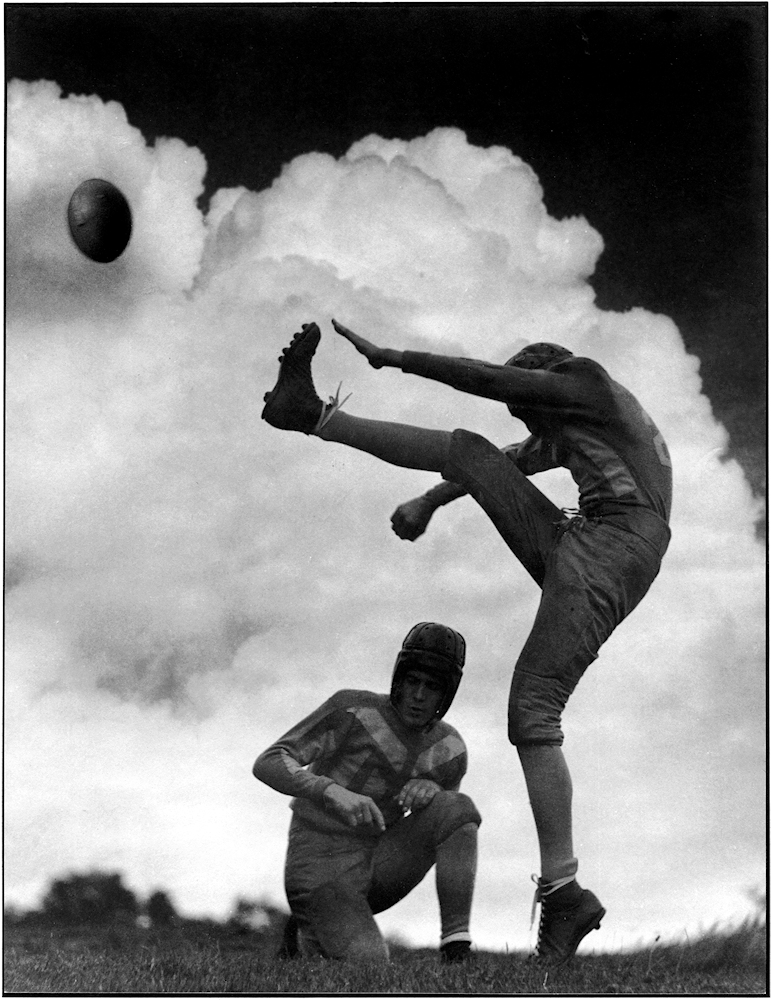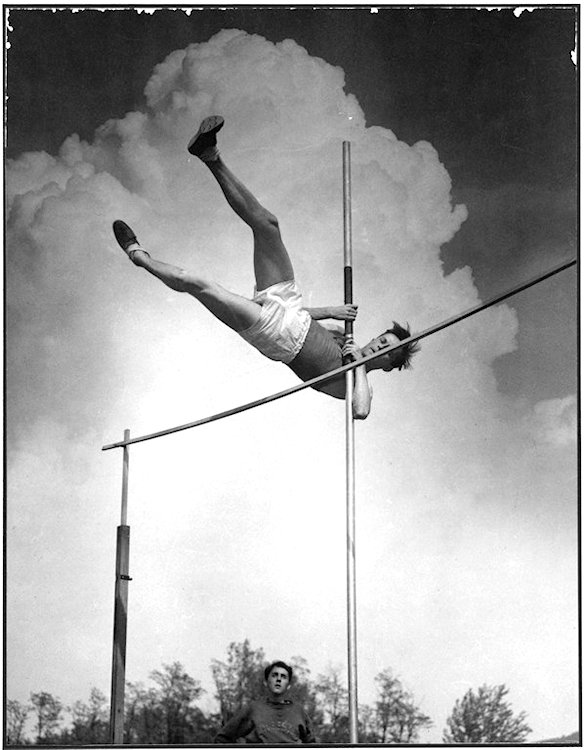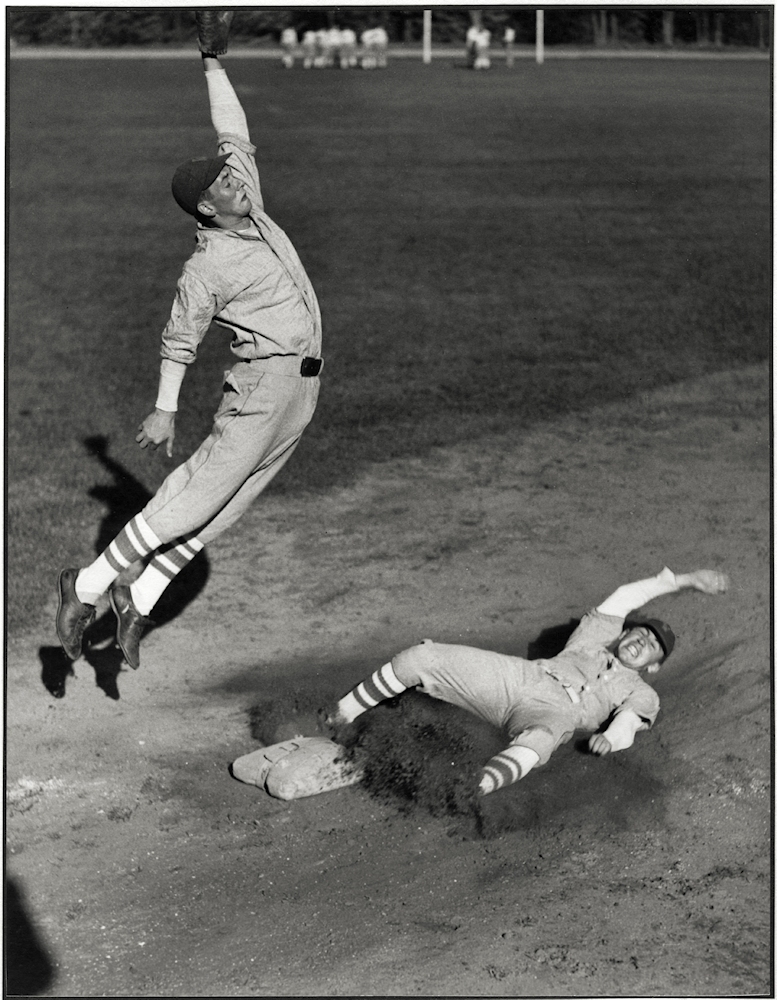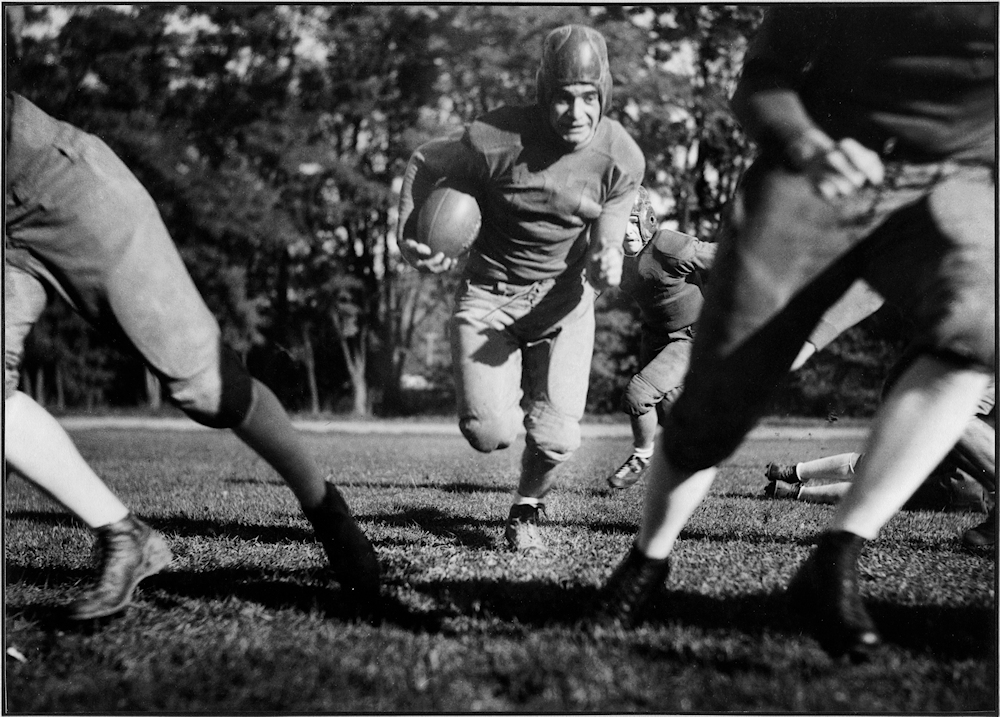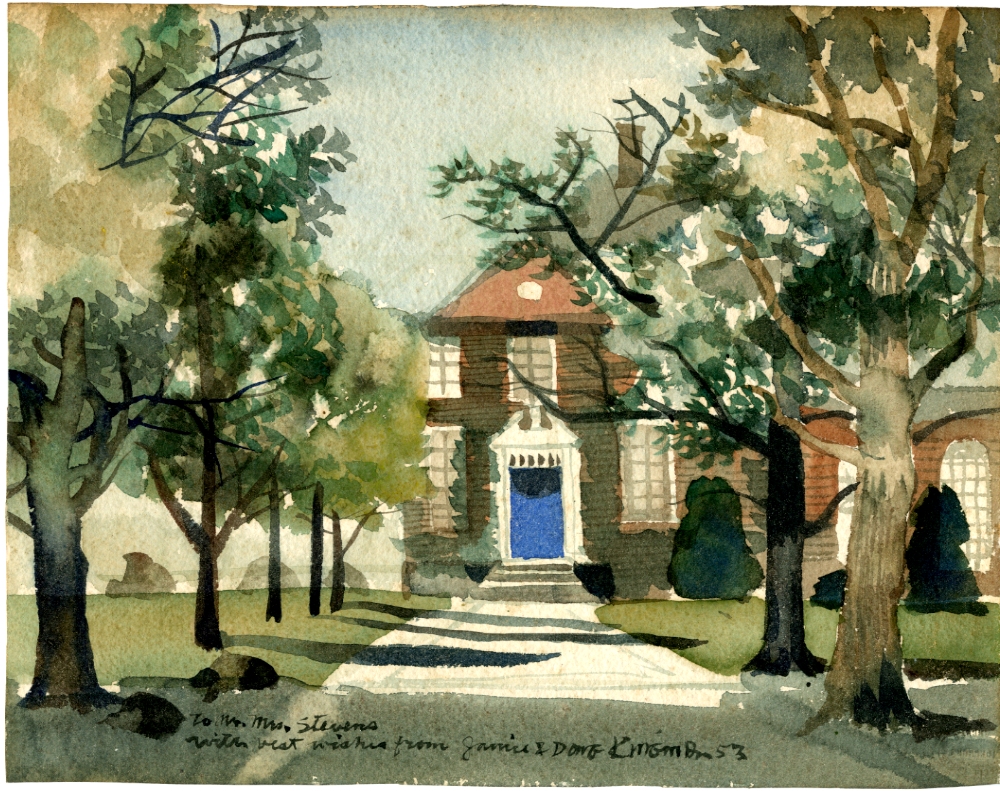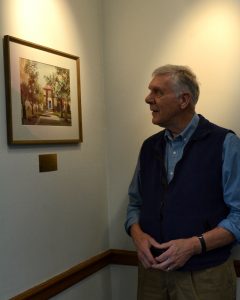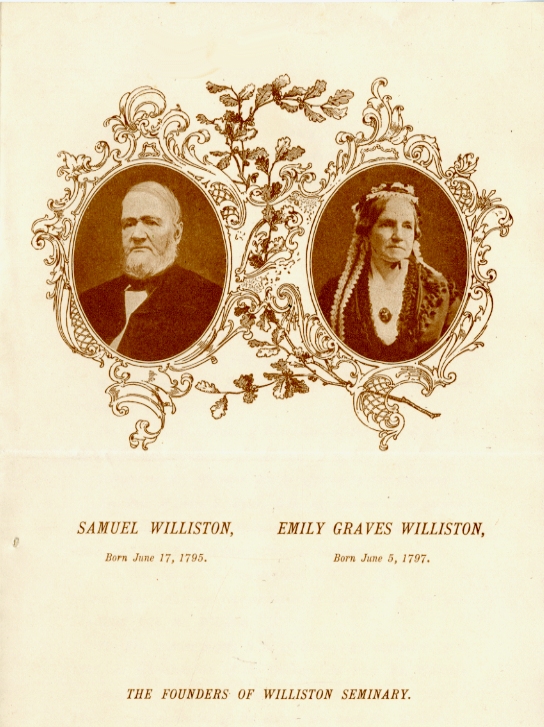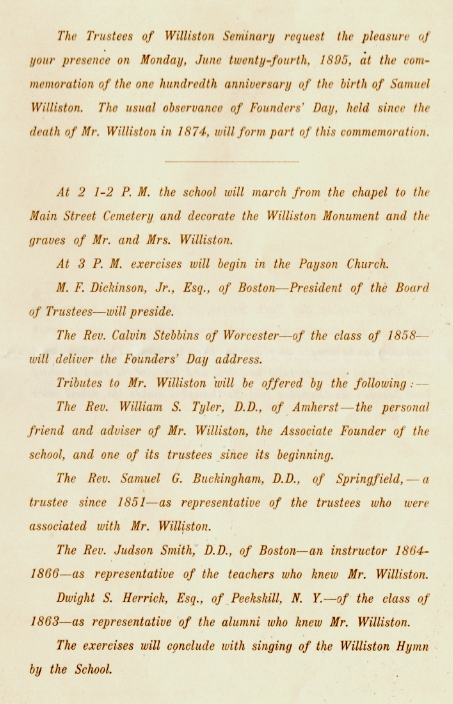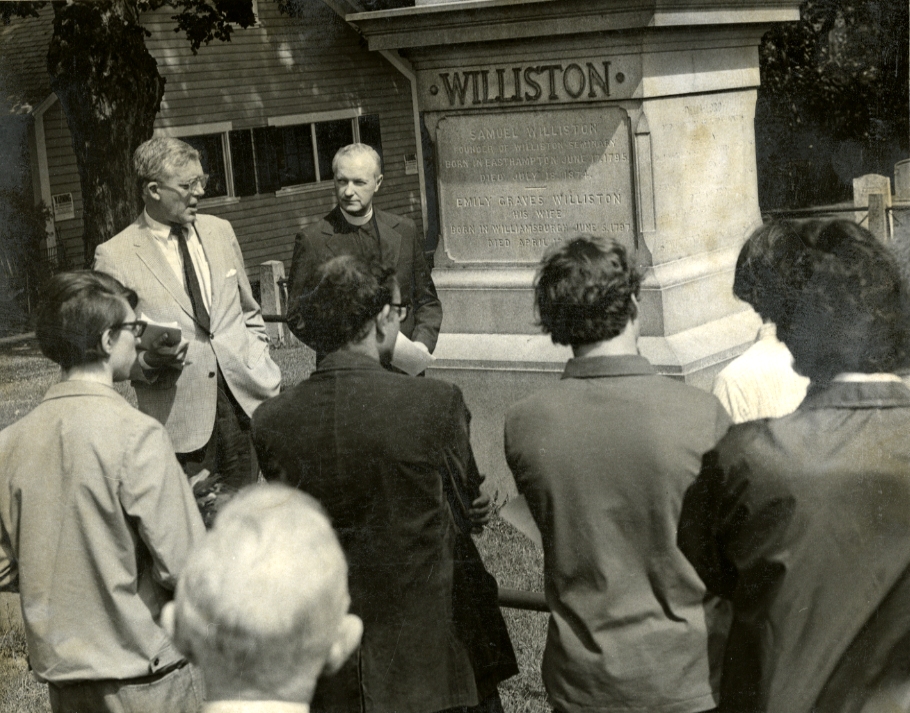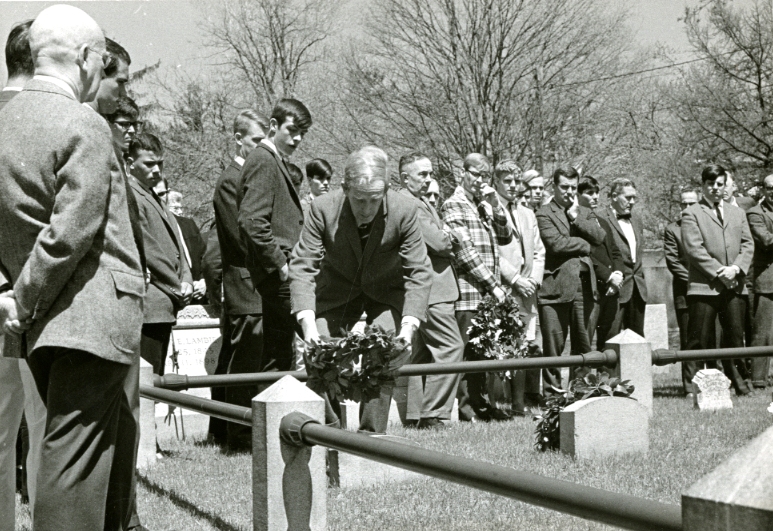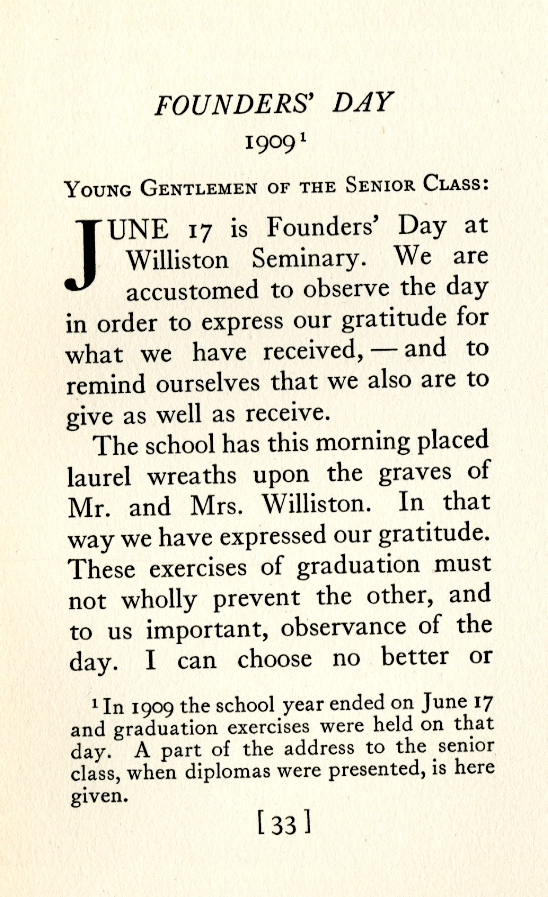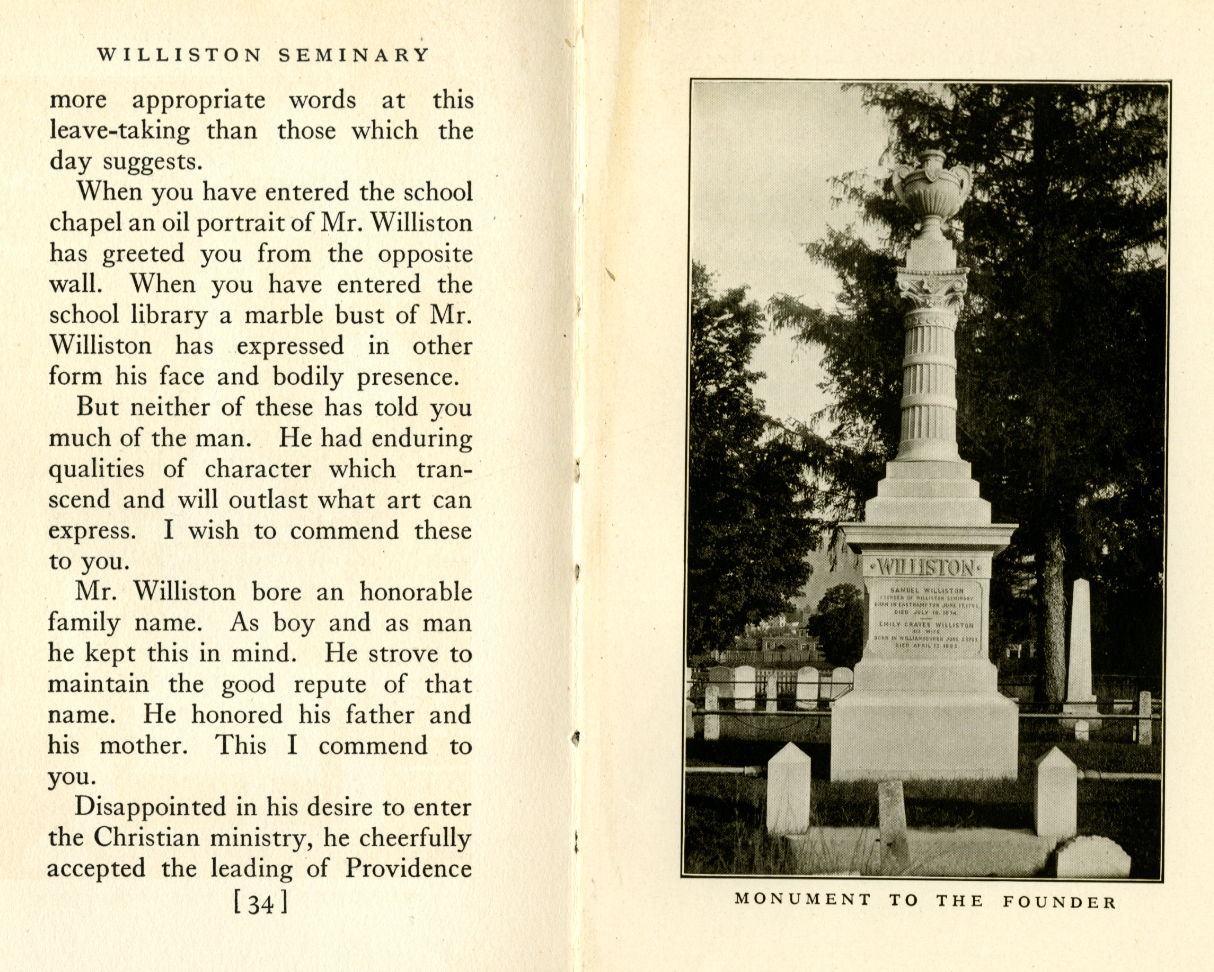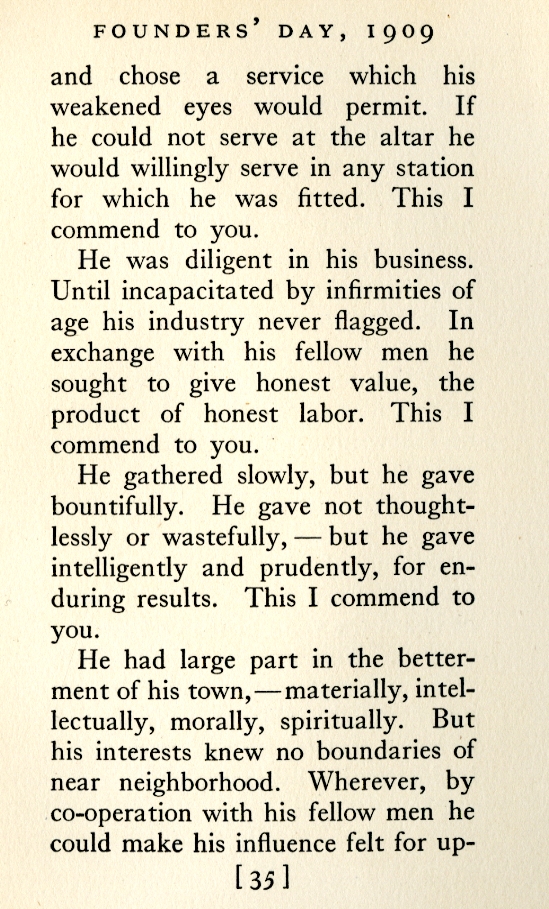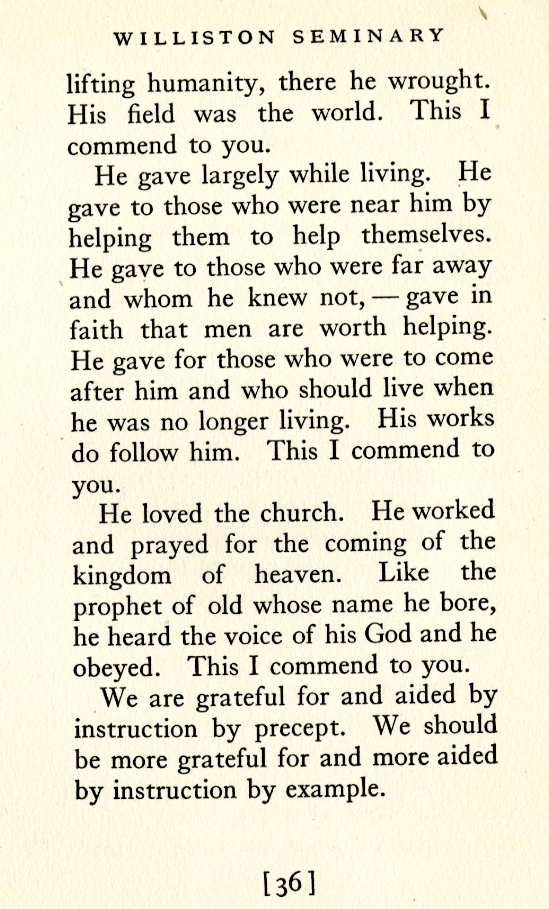Williston’s Song of Songs
It is sung, with varying degrees of solemnity and competence, at solemn events like graduations and hockey games. If “Hail to Williston Northampton” is our recently adopted Alma Mater, then surely the much more venerable “Sammy” qualifies as our Alma Aviam. (That’s “Beloved Grandmother.” Don’t you regret not having taken Latin? But I digress.) At least one former Head of School thought the song and its associated traditions puerile and tried, without success, to suppress it. “Sammy” remains the Song that Would Not Go Away.
Link: Listen to the 2012 Caterwaulers singing “Sammy!”
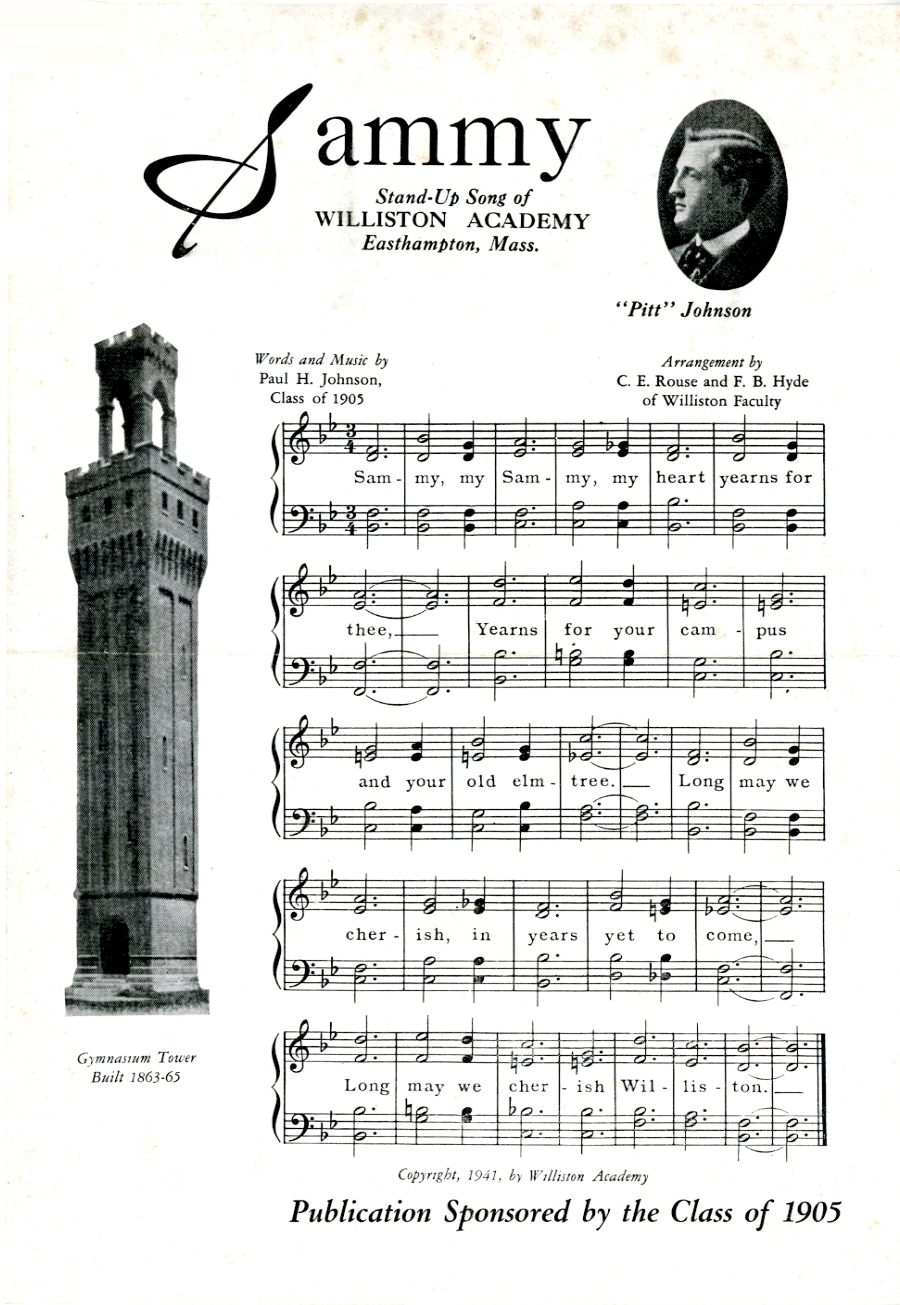
Link: A more rough-and-ready performance from Mem West, National Kazoo Day, 2019.
Venerable Williston Lore tells us that “Sammy,” our “stand-up song,” was written by Paul “Pitt” Johnson, class of 1905. This appears to be accurate, although it seems that the memory briefly slipped Johnson’s mind after he graduated. But in 1939, Alumni Secretary Howard Boardman asked for Johnson’s recollection. Pitt wrote back,
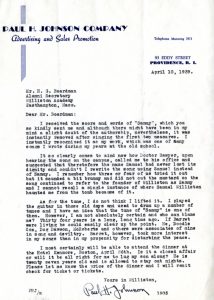
“Although there might have been in my mind a slight doubt of the authorship, nevertheless, it was instantly removed after singing the first two measures. I instantly recognized it as my work, which was one of the many songs I wrote during my years at the old school.” [The full letter is reproduced at right; please click on the image to enlarge it.]
Johnson continued, “It so clearly comes to mind now how Dr. Sawyer [Headmaster Joseph H. Sawyer], upon hearing the song on the campus, called me to his office and suggested that theretofore the name Samuel had never lost its dignity and couldn’t I rewrite the song using Samuel instead of Sammy. I remember how three or four of us tried it out but it sounded a bit brummy and didn’t cut the mustard so the song continued to refer to the founder of Williston as Sammy and I cannot recall a single instance of where Samuel Williston haunted me from the tomb because of it.”
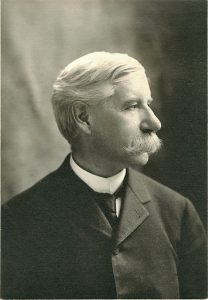
It is perhaps ironic that Johnson knew “Sammy” as his own when he heard the first two measures, since that is the one portion of the tune that he most certainly did not write. Fans of Gilbert and Sullivan operettas will recognize the phrase as having been lifted, note for note, from the Bridesmaids’ Chorus in Trial by Jury, at the words “Wear the flowers ’til they fade.” The show was wildly popular at the time Johnson “borrowed” the tune – and the cribbing was probably unconscious. As for the lyrics that so bothered Joseph Sawyer, it is likely that having written “Sammy, my Sammy, my heart yearns for thee,” Johnson needed a rhyme, and settled on “and your old elm tree.” Nothing we know of Samuel Williston suggests that he ever took an interest in trees, elm or otherwise. Yet, as has been detailed elsewhere, from this bit of doggerel entire school traditions have risen. (See “The Brand,” particularly toward the end of the article.) Continue reading


